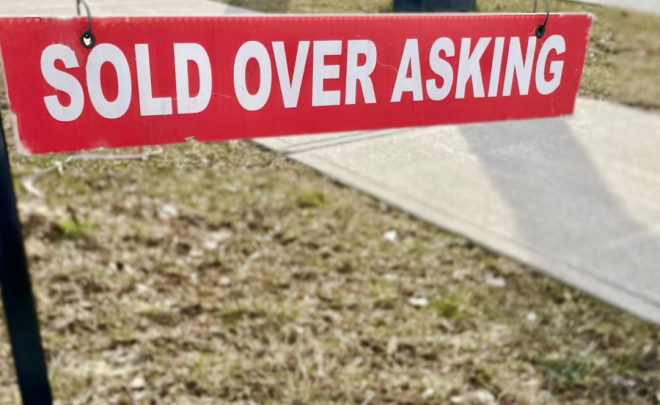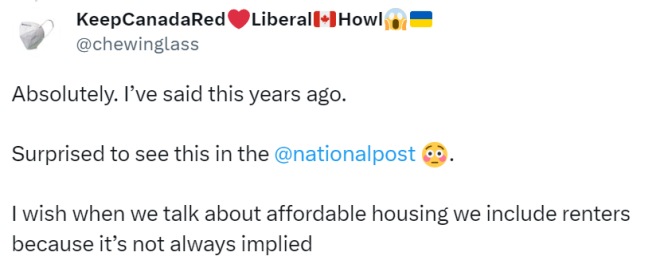多伦多陷入危机:这个原因导致中产被团灭,只剩穷人
据National Post报道,多伦多、温哥华注定要失去中产阶级......如果不尽快改变现状,最后恐将只剩下百万富翁和极度贫困者。
中产阶级的消失直接关系到城市中几乎所有其他危机。更糟的后果包括犯罪、药物滥用和无家可归。而后,关键行业出现人才流失和劳动力短缺,这进一步刺激了更广泛的经济衰退,使市中心核心区域空置和交通削减,循环往复......

《旧金山纪事报》对"厄运循环"进行了如下定义:一种负面发展导致另一种负面发展,进而使第一个问题变得更加严重。这是一个恶性循环。
这个术语已经成为总结旧金山经济快速下滑的一种简洁方式。在那里,高犯罪率、日益严重的无家可归者问题、高昂的房地产、普遍的药物滥用、交通衰退、空置办公室和企业纷纷逃离该地区等问题相互交织,情况越来越糟,看不到尽头......
从温哥华到多伦多,甚至圣约翰,加拿大的城市都应该注意到,类似的问题开始困扰他们的城市中心,并相互加剧,形成他们自己的"厄运循环"的开端。
像旧金山一样,加拿大城市的衰落始于中产阶级"空心化"。随着市中心继续急剧分化为极端富有和极端贫穷,这种衰退的速度和强度也在不断加快。
为了避免像旧金山一样注定的命运,加拿大政治家必须解决这个问题的根源,并阻止中产阶级从城市中大规模流失。唯一的方法是恢复住房市场的可负担性。
旧金山是全球许多最富有的公司的所在地,并见证了最快速的房地产价格上涨。该城市拥有28.5万名百万富翁,629名千万富翁和63名亿万富翁,是美国所有城市中数量最多的。
然而,旧金山也是美国收入不平等程度最高的城市。仅8个家庭的财富总和就超过该城市底层50%的人口。约1%的人口,大约38,000名居民处于无家可归状态,这个数字与全美平均0.2%的无家可归人口比例相比,是一个惊人的数字。
多年来,由于旧金山缺乏中等收入的住房,中产阶级家庭因无法负担高房价而纷纷逃离这座城市。大量老师、护士以及其他基本工人因买不起房而离开。
现在,加拿大的城市也面临同样的情况。
加拿大高昂的房地产价格和"缺失中产阶级"住房的匮乏,正在以越来越快的速度赶走中产阶级家庭、年轻专业人士和基本工人。在过去几年里,房价的飙升使城市财富差距达到了前所未有的高度。
那些留下来的人发现他们被逼到了极限。一个令人不安的统计数字显示,每日面包食品银行的用户中有33%是全职工作的人。
在过去几年里,加拿大城市中产阶级的崩溃几乎无法忽视。实际上,这种情况已经持续了十多年。现在唯一的问题是,我们是否能够组织一个长期的厄运循环的发生。
或许美国在没有一个健康的旧金山的情况下仍然可以蓬勃发展,但如果温哥华、多伦多或其他重要经济引擎城市衰落,我们难以证明加拿大仍然可以繁荣。相反,更容易想象到的是,局部的厄运循环将演变成席卷性的厄运漩涡。
我们必须通过保护加拿大各地城市及其周边地区所剩不多的中产阶级来阻止这个循环,而这要从解决住房问题开始。

接下来,让我们一起来看看中产们都是怎么说的:
"超出要价出售应该是非法的。设定一个公平的价格,并将其作为上限。房子是用来住的,不是用来发财的。"

"绝对的。我几年前就说过这个观点。我希望当我们谈论经济适用房时,能够把租房者包括在内。"

"更多的移民、国际学生和临时外籍工人争抢有限的住房资源并没有起到帮助的作用。"

"令人费解的是,在多伦多和温哥华,仍有一些人看不到中产阶级灭绝的问题。但请放心......这种情况很快就不会再存在。"

"与此同时,加拿大也应该停止如此猛烈的移民,直到我们能够真正容纳所有这些新来者。前几天我看到加拿大的人口已经达到了4000万,真是让我大吃一惊,因为在几年前的最后一次人口普查中,人口才3300万。我对移民没有意见,但当一个国家的基础设施无法承受如此快速的增长时,我们必须放慢速度,直到能够承受为止!"

“如果你拥有任何可携带的资格证书,只要离开大多伦多和温哥华,你就可以给自己一个不错的加薪机会。随着这些城市失去中产阶级的专业人员和技工,在城市中进行基本事务将变得非常困难和昂贵。你将只剩下房地产投资者和大量的外来服务工人。"

"更多的政府、更多的监管和更多的税收并不能恢复我们的城市。如果没有常识和克制,政府就会成为一个吸收财富而非创造财富的海绵。"

"为什么不集中精力解决其他自身造成的问题呢?如滥用药物、猖獗的犯罪和无家可归者问题?我认为如果不解决这些明显的问题,中产阶级不会很快回来。"

对此,你怎么看?
来源链接:
Sabrina Maddeaux: Toronto, Vancouver doomed as they chase away the middle class
If something doesn't change soon, all that will be left is millionaires and the very poor
The San Francisco Chronicle defines it as such: “Doom loop (noun) — A scenario in which one negative development causes another negative development, which then makes the first problem worse. A vicious cycle.”
They would know. The term has become a succinct way of summing up San Francisco’s rapid downward spiral, where problems including high crime, soaring homelessness, exorbitant real estate, widespread drug use, crumbling transit, empty offices and businesses fleeing the area feed into one another, making each other worse and worse with no end in sight.
Canadian cities from Vancouver to Toronto, and even Saint John, should take note as similar problems begin to plague their urban centres and exacerbate one another, forming the beginnings of their own doom loops.
Like San Francisco, Canadian cities’ decline began with the hollowing out of their middle classes. As downtowns continue to divide sharply into extreme haves and have nots, the pace and intensity of this decline accelerates.
To avoid what increasingly looks like San Francisco’s doomed fate, Canadian politicians must address the root of the problem and stop the middle class’ exodus from cities. The only way to do this is by restoring affordability to the housing market.
San Francisco and the Bay Area are home to many of not just America’s, but the world’s, wealthiest companies and witnessed one of the most rapid real estate price escalations on the continent. The urban area counts 285,000 millionaires, 629 centi-millionaires and 63 billionaires — the highest number of any U.S. city.
However, it also has the highest income inequality in the country, and just eight households have more wealth than the bottom 50 per cent of its population put together. One per cent of the population, totalling approximately 38,000 residents, are homeless — a staggering number in contrast to an average of 0.2 per cent across America.
Middle-class families have been fleeing the city for years thanks to its unaffordability and, in particular, lack of middle-income housing. Teachers left in droves when they could no longer afford homes, and so did other essential workers like nurses.
High real estate prices and a dearth of “missing middle” housing has also chased middle-class families, young professionals and essential workers out of Canadian cities at ever-quickening rates. The surge in home prices over the last few years drove urban wealth gaps to unprecedented highs.
The ones who remain find themselves squeezed to the limit. Just one disturbing statistic: 33 per cent of Daily Bread Food Bank users work full-time jobs.
While the destruction of the middle class in Canadian cities has become near impossible to ignore over the last several years, in reality, it’s been happening for well over a decade. The only question now is whether we can prevent a prolonged doom loop from taking hold.
A disappearing middle class directly ties into almost every other crisis downtowns face. Obvious consequences include homelessness, drug abuse and crime. Brain drain and labour shortages in key sectors follow. These then spur broader economic decline, empty downtown cores and transit cuts. Repeat the cycle.
While perhaps the U.S. can still thrive without a healthy San Francisco, it’s harder to make the case that Canada still thrives if Vancouver and Toronto, or a combination of other major economic engines, fail. Here, it’s easy to imagine localized doom loops become sweeping doom vortexes.
We must stop the cycle by protecting what’s left of the middle class in Canadian cities and their surrounding areas across the country— and that starts with fixing housing.
National Post
